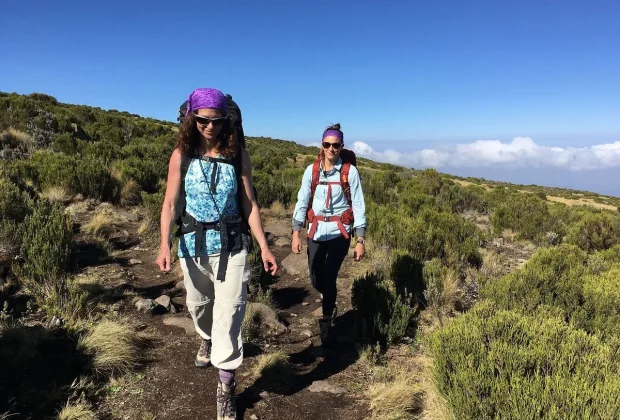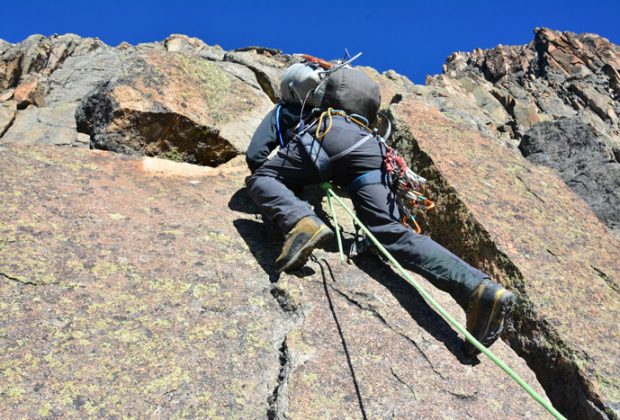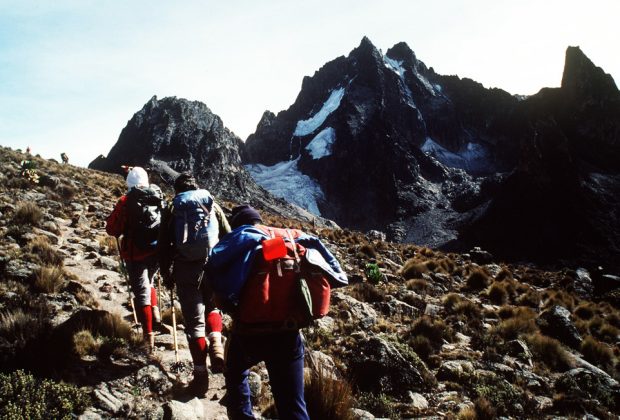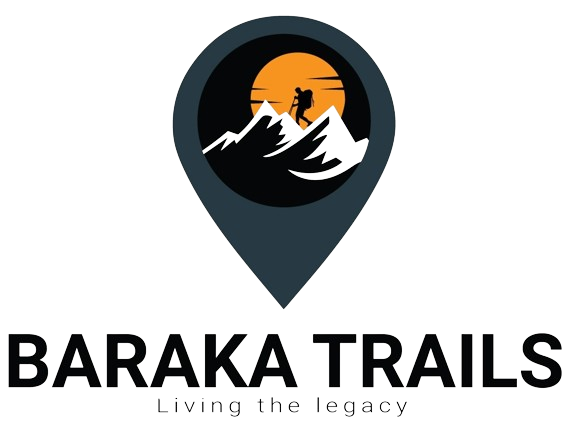4 DAYS MOUNT KENYA CLIMB



4-DAY SIRIMON ROUTE – MOUNT KENYA CLIMB
Sirimon Route Summary
Mount Kenya is East Africa’s second highest mountain after Kilimanjaro in Tanzania.
This Mount Kenya climbing route is much more scenic than Naro Moru route. 4-day Sirimon route is on the drier side of the mountain which offers some of the finest walking. Climbing up through forest into a wide ridge approach to the summit area. The route starts on the northwest side of the mountain near Nanyuki Town. Access is adequate and the bunk house facilities are the best on this side of the mountain.
Attempting the summit can be done in 4 days hiking. Those with additional time can opt to spare an extra night at Liki North Camp in between Old Moses Camp and Shipton Camp.
The summit at Lenana Peak can be reached in 4 days hiking as per the below itinerary. However, we recommend an overnight acclimatization at the base in Nanyuki town. Mount Kenya Climbing Expeditions can helps in arranging for an extra day at an additional fee.
Please find to follow the 4-day trek program. This can also be used as an acclimatization hike for those climbing Mount Kilimanjaro in Tanzania – East Africa.
Leave Nairobi early morning at 8 am to Nanyuki town for lunch, taking about 4 hours. Proceed to Mount Kenya National Park Sirimon Gate, 1 hr, 2440m. From the Sirimon Park Gate follow the track as it winds uphill though the forest which becomes heath land after about 3 hrs. About 3½ hours from the gate the track veers right to Judmier Camp, 3300m for dinner and overnight, L, D
After breakfast, follow the track uphill, forking left at the junction. After one hour from Old Moses Camp, the track crosses Ontulili River. Go right contouring through the Moorland and crossing Liki North and continue uphill to Mackinders Valley. From the valley, there are panoramic views up the valley towards the main peaks. Dinner and overnight at Shipton Camp, 4200m, B,L,D
Attempting the summit at Lenana Peak. Leave early morning at 3am up a steep stony quarry that cuts through a cliff clearing visible part towards lower Hall Tarns. Arrival at Point Lenana (Lenana Peak) is at 6:30am, taking about 3hrs. After the sunrise, descend down to Shipton Camp, 2hrs, for breakfast. Then hike further 4hrs down to Old Moses Camp for dinner and overnight, B,L,D
After breakfast, walk down through the rainforest for 2~3 hours to reach Sirimon Gate to sign out of Mount Kenya National Park. From Sirimon park gate, you will now connect with your transport to Nanyuki Town for lunch. This will be followed by vehicle transfer back to Nairobi arriving at approximately 3pm, B,L
Tour cost: US$ 940 per person
Not Included
- Laundry, sleeping bags, beverages/Drinks, accommodation before the trek and climbing gears
- International flights
- Visas to Kenya/ Tanzania
- Items of personal nature
- Any other extras not detailed in the above itinerary
Included
- Transfer to and from the base of the mountain
- Full board accommodation whilst on the trek.
- Meal plan as detailed
- Accommodations in camps/huts as per the itinerary
- Service of an English speaking professional guide, porters and skilled cook
- Treated water on the trek.
- On completion, successful climb Certificate
- All Transfers start and finish Nairobi
- What are the popular trekking destinations in Kenya?
- Popular trekking destinations in Kenya include Mount Kenya, the second-highest peak in Africa, and the Aberdare Range.
What is the best time of year for trekking in Kenya?
- The best time for trekking in Kenya is generally during the dry seasons, which are typically from January to February and from June to October. These months offer clearer skies and better visibility.
What are the different routes to trek Mount Kenya?
- Mount Kenya offers various trekking routes, including the popular Sirimon, Chogoria, Naro Moru, and Burguret routes. Each route offers unique landscapes and experiences.
Do I need prior trekking experience to trek in Kenya?
- While prior trekking experience is not always necessary, some treks, especially those to higher altitudes, require a good level of fitness and preparation. It’s essential to assess the difficulty level of the trek and train accordingly.
What permits or fees are required for trekking in Kenya?
- For trekking Mount Kenya, permits are required, and fees vary depending on the route and the park entry fees. It’s advisable to obtain permits in advance through the Kenya Wildlife Service (KWS) or authorized tour operators.
What should I pack for a trekking expedition in Kenya?
- Essential items for a trekking expedition in Kenya include sturdy hiking boots, appropriate clothing layers, a backpack, water bottles or a hydration system, sunscreen, insect repellent, a first aid kit, and a camera.
Are there risks associated with trekking in Kenya?
- Trekking in Kenya, especially at higher altitudes, carries inherent risks such as altitude sickness, unpredictable weather, and wildlife encounters. It’s essential to trek with experienced guides and adhere to safety guidelines.
What wildlife might I encounter while trekking in Kenya?
- While trekking in Kenya, especially in the national parks and reserves, you may encounter various wildlife species such as elephants, buffalo, antelopes, and a variety of bird species. It’s crucial to respect wildlife and maintain a safe distance.
Can I combine trekking with other activities in Kenya?
- Yes, many travelers combine trekking with other activities such as safari tours, cultural experiences, and beach vacations along the Kenyan coast for a diverse and enriching travel experience.
What level of fitness is required for trekking in Kenya?
- The level of fitness required depends on the specific trek and its difficulty level. While some treks are suitable for beginners with moderate fitness levels, others require a higher level of physical endurance and stamina. It’s essential to assess the trek’s difficulty and train accordingly.
